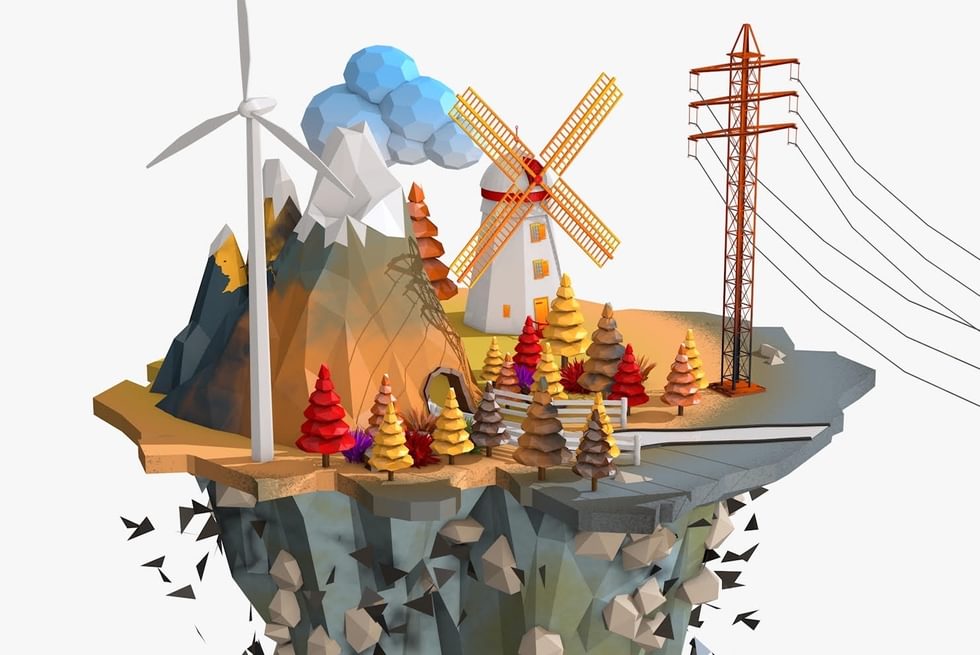Views
From the Series: Speaking Volumes
From the Series: Speaking Volumes

Can one ever view a volume?
On the one hand, the view, an appropriation from outside, involves a relationship between viewer and viewed that is necessarily horizontal, vertical, or diagonal. Or, in the case of a 3D graphic, it may be the combination of all three. Thus, the view would seem to encapsulate the fusion of height, width, and depth that is the geometric definition of volume.
On the other hand, a volume is more than simply the summation of horizontal, vertical, and diagonal vectors. Volume is tactile, affective, embodied, and immanent. It flows amid transformations of matter in space and time. Even if volume, for a moment, can be fully apprehended, in its dynamism it immediately exceeds any representation (Bridge 2013; Elden 2013). Tim Cresswell’s (2006, 57) statement about mobility—that “it is absent the moment we reflect on it. It has passed us by”—could well apply to volume as well. Volume would seem to defy the disembodied, static distanciation of the view.
Or does it? What if the very properties of a volume that occlude the simple, static, externalized view facilitate a different kind of vision, where visual knowledge is achieved not in spite of a volume’s dynamism, but through it?
Consider, for instance, marine ecologist Jon Copley’s description of the techniques being used to produce a new, high-resolution map of the ocean floor by David Sandwell and colleagues at the Scripps Institute:
Unlike mapping the land, we can’t measure the landscape of the sea floor directly from satellites using radar, because sea water blocks those radio waves. But satellites can use radar to measure the height of the sea’s surface very accurately. And if there are enough measurements to subtract the effects of waves and tides, satellites can actually measure bumps and dips in the sea surface that result from the underlying landscape of the ocean floor.
Where there’s a large underwater mountain or ridge, for example, the tiny local increase in gravity resulting from its mass pulls sea water into a slight bump above it. If instead there is an ocean trench, the weaker local gravity produces a comparative dip in the ocean surface.
In the popular imagination, and even in that of many oceanographers, the ocean is a static three-dimensional field of coordinates, punctuated by discrete currents and flows, waves, and tides. When one adopts this perspective, efforts to see through the ocean to the bottom are conceptualized as a process of probing through an ideally transparent, static void. Such efforts are bound to fail. The ocean’s opacity is constituted by molecular mobilities, and these mobilities—which serve to reassert the ocean’s materiality—will always confound idealizations of the ocean as empty, insubstantial, and transparent. As a volume—a dynamic space of flowing materiality—the ocean is necessarily something more.
The brilliance of Sandwell’s technique is that the ocean’s dynamism and the properties of water that lead to its persistent re-formation are treated not as obstacles, but as opportunities for vision. Instead of understanding the ocean as something to see through as one seeks to map the seabed, Sandwell reframes it as something to see with. Volume, rather than being understood as a barrier to vision, becomes a means for achieving it.
At one level, Sandwell’s technique is not that new: many sensing devices produce images by measuring the refraction of waves by moving particles. However, the technique leads us to question commonsense understandings of the ocean’s volumetrics. Sandwell’s technique requires that we perceive water not as an undifferentiated mass of space, a platform for an array of fixed coordinates and discrete forces, but rather as an assemblage of energized molecules. This perspective, which is applied in Lagrangian fluid dynamic models, may provide a means for interrogating the universe’s volumes (Steinberg 2013). It also can shape how those volumes are viewed.
An attentiveness to the ocean’s volumes can shape not only how we see, but also what we see. In 2016, oceanographers using visual data to study circulation in the Caribbean discovered that currents were combining to create sound waves, a phenomenon that they call the “Rossby whistle” (Hughes et al. 2016). Effectively, by viewing the ocean in its voluminous complexity, they have expanded the notion of viewing to see sound. Perhaps this is only the beginning of insights that can be gained when we view not just through, but with volumes.
Herman Melville begins Moby Dick with a portrait of New Yorkers gazing out to sea, projecting their dreams onto the ocean’s vast expanse. Their gaze is purely horizontal, a lateral view across the waves. The ocean’s depths are only imagined. And yet, even in that imagination of volume—a world of depth, motility, and dynamic churn—the Manhattanites come to view something else: their pasts, their futures, the potential realizations of their dreams; “the image of the ungraspable phantom of life” (Melville 1922, 3). The volume that they view is one of temporal as well as spatial depth. This is the power of the volumetric view: the harnessing of volume—perceived, imagined, encountered—to view a dynamic, unsettled world of multiple pasts and multiple futures.
Bridge, Gavin. 2013. “Territory, now in 3D!” Political Geography 34: 55–57.
Cresswell, Tim. 2006. On the Move: Mobility in the Modern Western World. New York: Routledge.
Elden, Stuart. 2013. “Secure the Volume: Vertical Geopolitics and the Depth of Power.” Political Geography 34: 35–51.
Hughes, Chris W., Joanne Williams, Angela Hibbert, Carmen Boening, and James Oram. 2016. “A Rossby Whistle: A Resonant Basin Mode Observed in the Caribbean Sea.” Geophysical Research Letters 43: 7036–43.
Melville, Herman. 1922. Moby Dick, or, the Whale. London: Sampson, Low, and Marston. Originally published in 1851.
Steinberg, Philip. 2013. “Of Other Seas: Metaphors and Materialities in Maritime Regions.” Atlantic Studies 10, no. 2: 156–69.